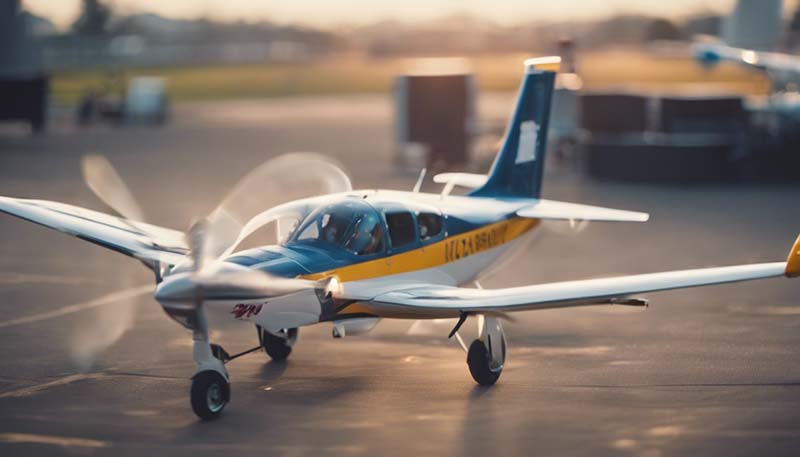Air safety has always been a top priority for the aviation industry, and the role of well-trained and certified pilots is crucial in ensuring the safety of passengers and crew. With the continuous growth of air travel, it is essential to understand the importance of pilot training and certification in maintaining high safety standards. This article will explore the various aspects of pilot training and certification, the benefits of a well-trained workforce, and the impact of these factors on air safety.
Pilot Training: The Foundation of Air Safety
Pilot training is the process of acquiring the necessary skills, knowledge, and experience to operate an aircraft safely and efficiently. It is a comprehensive program that covers various aspects of flying, including aerodynamics, aircraft systems, navigation, communication, and decision-making. The training process is designed to prepare pilots for the challenges they may face during their careers and to ensure that they can handle any situation with confidence and competence.
Advertisement
The initial phase of pilot training begins with ground school, where students learn the theoretical aspects of flying. This includes studying aerodynamics, aircraft systems, weather, and air traffic control. After completing the ground school, students progress to flight training, where they gain hands-on experience in the air under the supervision of a certified flight instructor (CFI). This phase of training is crucial in developing the pilot's skills, such as takeoff and landing, maneuvering, and emergency procedures.
As pilots gain experience, they can choose to specialize in different types of aircraft or pursue additional ratings, such as the commercial pilot license (CPL) or airline transport pilot license (ATPL). These advanced certifications require additional training and experience, further enhancing the pilot's skills and knowledge. Continuous training is essential for pilots to stay current with new technologies, regulations, and best practices in the aviation industry.
Certification: Ensuring Minimum Standards and Accountability
Pilot certification is a process that ensures pilots meet the minimum standards required to operate aircraft safely. Regulatory authorities, such as the Federal Aviation Administration (FAA) in the United States and the European Union Aviation Safety Agency (EASA) in Europe, establish these standards and oversee the certification process. The certification process includes written exams, oral exams, and flight tests, which assess the pilot's knowledge, skills, and ability to handle various situations.
Obtaining a pilot's license or certification is a significant achievement that demonstrates a pilot's competence and commitment to safety. It also serves as a benchmark for the level of responsibility and privileges a pilot can hold. For example, a private pilot license (PPL) allows a pilot to fly single-engine aircraft for personal use, while a commercial pilot license (CPL) enables them to fly for compensation or hire.
The certification process is not a one-time event; it requires ongoing maintenance and renewal. Pilots must complete periodic training, pass proficiency checks, and meet flight hour requirements to keep their licenses current. This ensures that pilots remain competent and up-to-date with the latest industry standards and practices.

Benefits of Well-Trained and Certified Pilots
Well-trained and certified pilots contribute significantly to air safety in several ways. Firstly, their extensive knowledge and experience enable them to make informed decisions and react appropriately to various situations, such as adverse weather conditions, mechanical failures, or emergency scenarios. This reduces the risk of accidents and incidents, ensuring the safety of passengers and crew.
Secondly, well-trained pilots are more likely to follow standard operating procedures (SOPs) and best practices, which have been developed to minimize risks and optimize performance. Adhering to these guidelines helps pilots manage their aircraft efficiently and effectively, reducing the likelihood of human error and enhancing overall safety.
Thirdly, certified pilots are held accountable for their actions and performance. The certification process establishes a clear set of expectations and requirements, and pilots must meet these standards to maintain their licenses. This accountability encourages pilots to remain focused on their training and professional development, ultimately leading to a safer and more efficient aviation industry.
Impact on Air Safety
The importance of pilot training and certification cannot be overstated when it comes to air safety. According to the International Civil Aviation Organization (ICAO), human factors are involved in approximately 70% of aviation accidents and incidents. By investing in comprehensive pilot training and ensuring strict certification standards, the aviation industry can significantly reduce the risk of human error and improve overall safety.
Furthermore, well-trained and certified pilots contribute to the development of a strong safety culture within the aviation industry. This culture of safety, which prioritizes the well-being of passengers and crew, encourages continuous improvement and fosters a sense of shared responsibility among all stakeholders.
As the aviation industry continues to grow and evolve, it is crucial to maintain a focus on pilot training and certification. By doing so, the industry can ensure that pilots are well-equipped to handle the challenges of modern air travel and continue to prioritize safety above all else.
Conclusion
In conclusion, pilot training and certification play a vital role in ensuring air safety. By providing pilots with the necessary skills, knowledge, and experience, the aviation industry can significantly reduce the risk of accidents and incidents. Furthermore, the certification process establishes a strong foundation of accountability and professionalism, which contributes to the development of a robust safety culture. As air travel continues to grow and evolve, it is essential to prioritize pilot training and certification to maintain the high safety standards that passengers and crew have come to expect.